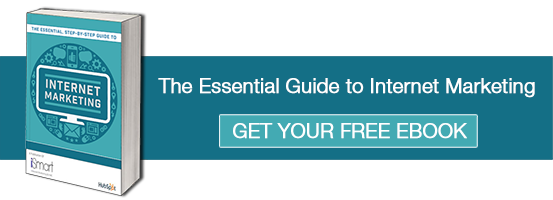
The Key Strategies to Convert Website Traffic into Sales Leads
September 25, 2025
How Artificial Intelligence (AI) Can Drive Business Growth Today
September 25, 2025
In today’s business environment, your website acts as a key touchpoint for your online marketing strategies. When executed properly, the right marketing activities can help raise your brand awareness, generate traffic, and convert the visitors into sales leads.
There are many websites out there that are designed beautifully with great functionalities. However, what good will it be if the website owner invests lots of money into designing a beautiful website that does not turn website traffic into leads or sales that he desires? This is where optimizing your website for lead generation will help you achieve this. In this blog post, we will share more on 5 lead generation components you can incorporate into your website.
1. Optimize Lead Generation Forms
Increase the likelihood of visitors providing their personal information by making your forms accessible and easy to fill in. This can be done by posting a sign-up form on every page, keeping it short and simple.
Most people are not willing to volunteer their personal details from the get-go, so too many fields can be a turn-off. Aside from making the forms easy to find and fill out, boost your lead generation efforts by adding visuals that direct users in the right direction and a valuable offer that is hard to resist.
2. Include Testimonials to Enhance Social Proof

For a site visitor to become a lead, they will have to hand over some personal inform
ation such as their name, contact number and email address. But first, they have to develop trust in your brand before giving this information to you.
Therefore, establishing credibility is important. Adding a testimonial page on your website is one way to inform potential clients that your current customers are happy with your product and se
rvices. It validates your business and provides social proof so that potential customers trust you
and gain more confidence in your ability to deliver on your promise.
3. Effectiveness of Pop-up Forms
Some people find pop-up forms annoying, but they remain as one of the most effective ways to capture qualified leads. This type of forms has the potential to generate an increase in
online conversions from newsletter sign-ups to sales.
When using pop-up forms, make sure you are:
- Offering something valuable and relevant so they add to your website visitors’ experience, rather than interrupting it;
- Timing their appearance so they’re triggered by certain actions or time spent on a page in a way that feels natural and not interruptive;
- Using language that’s actionable and human;
- Not ruining the mobile experience.
To find out if your target audience responds well to your pop-up form, test it on your landing page. Put a pop-up form on the page for 30 days, and then remove it in the next month. Analyze the user experience, take a closer look at the response rate, and review this data to decide if pop-
ups work for you.
- Use Thank You pages
A lot of marketers miss out on a big opportunity to deliver premium content to those who might be interested. Once visitors have submitted a form on your landing page and are taken to a “thank-you” page, include a link to informational content related to their purchase. This is an opportunity for you to suggest other offers that could be of interest.
You may also send out a kickback email i.e. a “thank-you” email. In a study done by HubSpot on engagement rates of “thank-you” emails versus “non thank-you” emails, kickback emails doubled the engagement rates compared to standard marketing emails. Use kickback emails as opportunities to include specific calls-to-action and encourage sharing and social engagement.
A good rule of thumb is not to send out offers more than once a week, and once every two weeks is considered a standard rate. This will keep you in your prospects’ minds without coming across as being over-aggressive.

- Personalize and Highlight Your Call-to-Action (CTA)
When using calls to action, aim to be personal. For example, if someone has already visited your page, you can use this information to be more personal with him or her the next time they visit. Here are several CTA ideas you can test out for yourself.
Pave the way for your readers by telling them exactly what you want them to do. Persuade them to provide you with their contact information with calls to action at the end of each blog post and strategically place them throughout your website so readers can easily drop you an inquiry if they’re interested. Entice readers with words that will attract anyone looking for a good deal. Phrases like “free”, “trial”, “exclusive”, “download” and “limited-time offer”.
To end off, I cannot stress enough about how important testing is. None of these tips will benefit you unless you test them for yourself and determine what works for your situation. Number and quality of leads are conversion factors just like any other – one which you’ll want to see increase and improve over time.
Testing is the only true way to know exactly what works for your unique needs, but keep these best practices in mind when designing your website to help you work less and convert more!



